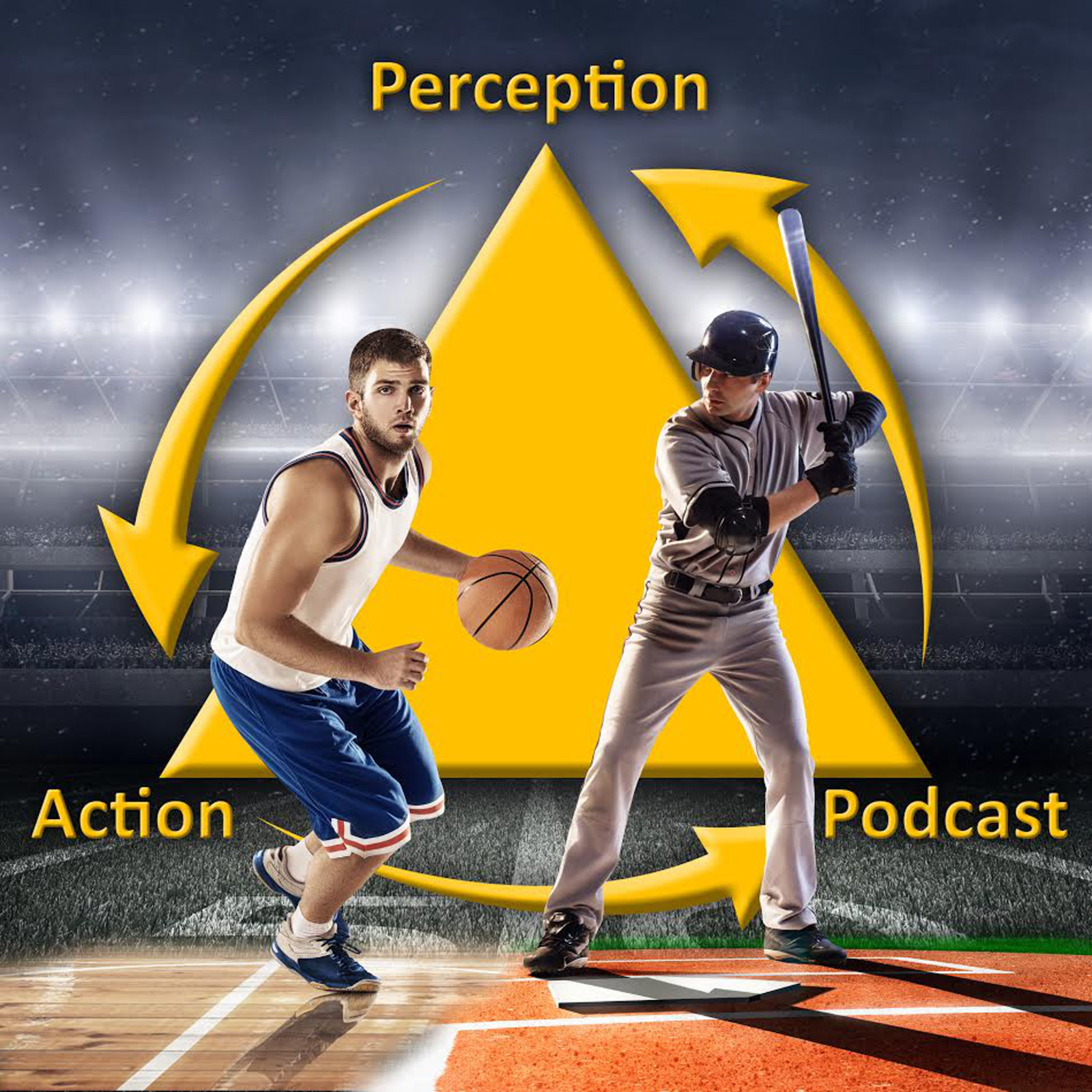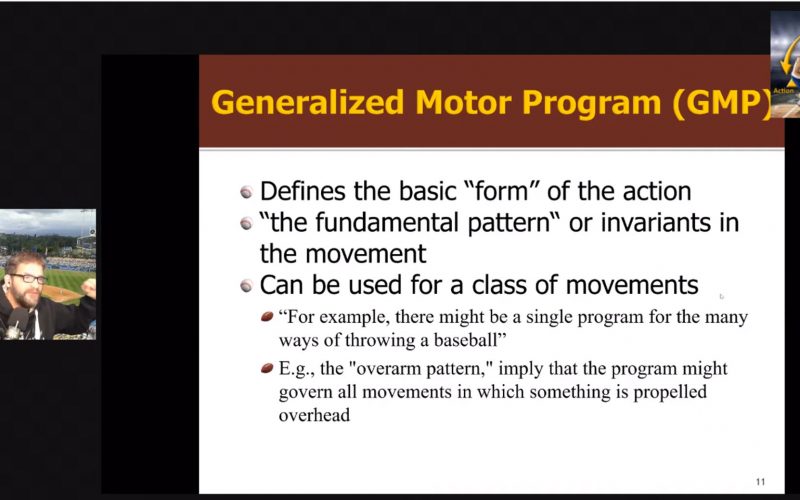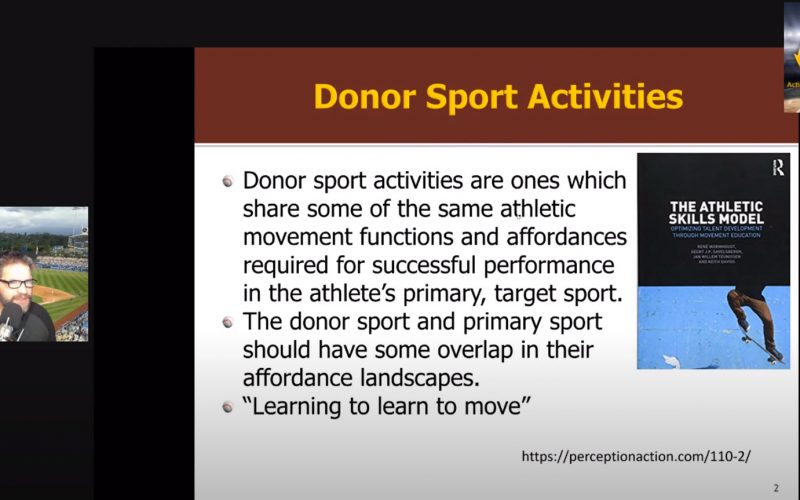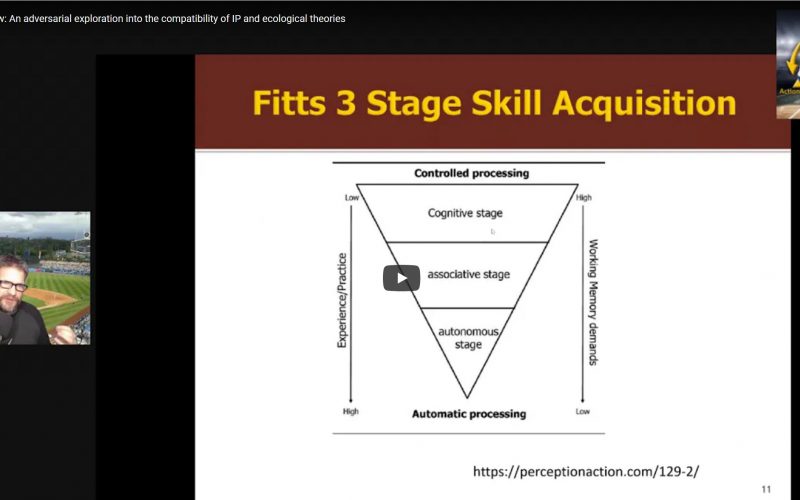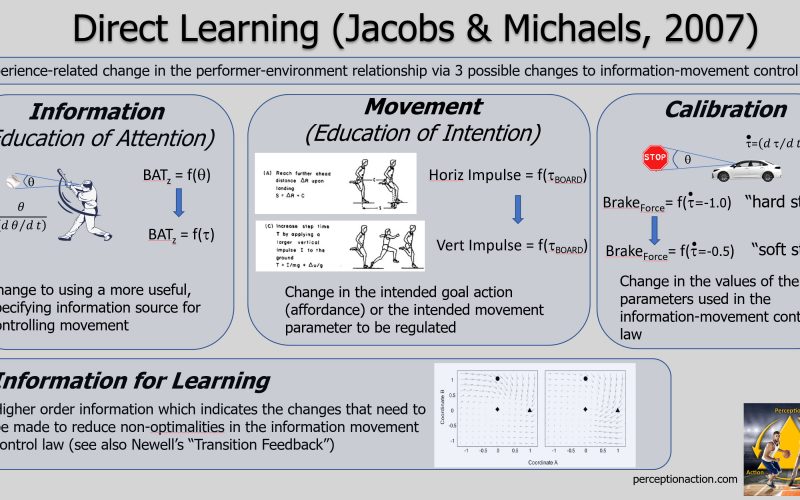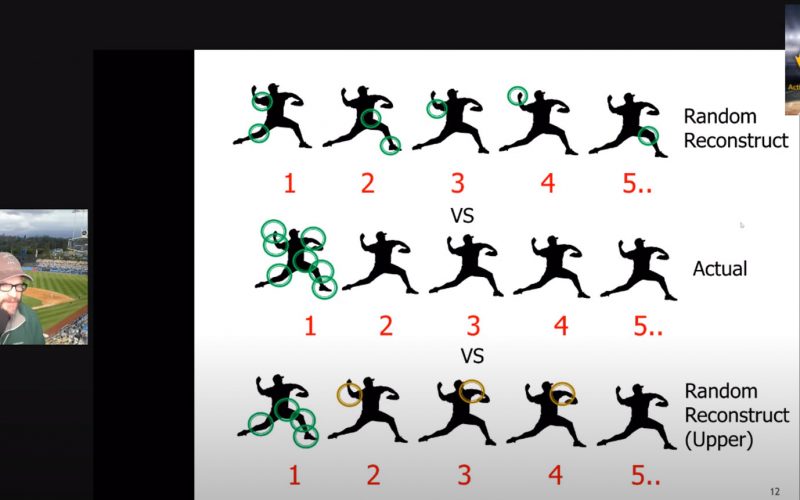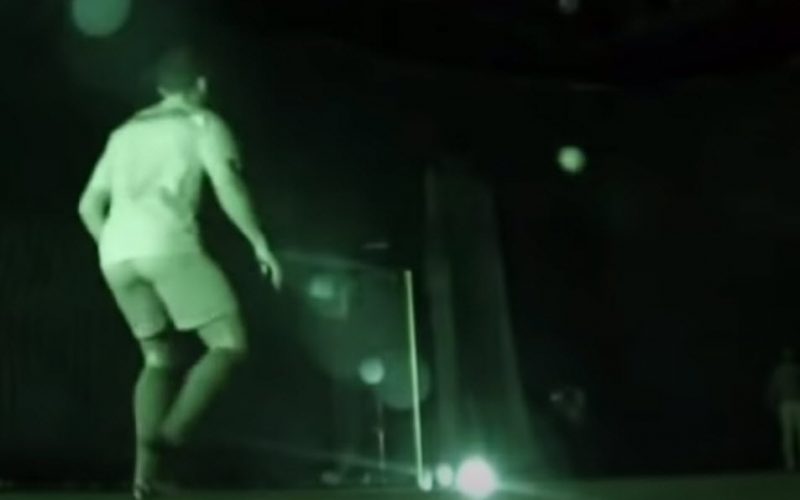BlogPosts
NEW Video Article Review: Donor Sports, Dance & Coordinating Degrees of Freedom
Dance training improves the CNS’s ability to utilize the redundant degrees of freedom of the whole body
Read MoreNEW Video Article Review: Equipment scaling, variability & information for learning
Children’s coordination of the sweet spot when striking a forehand is shaped by the equipment used
Read MoreArticle Review: An adversarial exploration into the compatibility of IP and ecological theories
Information Processing and Constraints-based Views of Skill Acquisition: Divergent or Complementary?
Read MoreDirect Learning Resource Page
A new resource page with infographic, definition of key terms, and links to resources for Jacobs and Michaels (2007) Direct Learning theory. Direct Learning
Read MoreArticle Review: A proposed reconciliation of ecological & information processing theories of perception-action
Two visual systems and two theories of perception: An attempt to reconcile the constructivist and ecological approaches
Read MoreArticle Review: Contextualized Skill Acquisition Research – Dexterity development in Brazil soccer
Malandragem and Ginga: Socio-cultural constraints on the development of expertise and skills in Brazilian football
Read MoreMy Favourite Research Papers of 2020
To wrap-up the year I am creating some video reviews of some of my favourite journal articles from 2020, putting my own ecological spin on things 🙂 Motor learning in real-world pool billiards Consistent Hand Dynamics Are Achieved by Controlling Variabilities Among Joint Movements During Fastball Pitching Fatigue-Related and Timescale-Dependent Changes in Individual Movement Patterns…
Read MoreThe Two Skill Acquisition Approaches: Key Differences
Outlining the key differences between the Information Processing and Ecological Approaches to Skill Acquisition. Is this a useful dichotomy?
Read MoreWhy Cristiano Ronaldo’s Ability to Play “in the Dark” is not Evidence for Predictive Control
I think by now most people have seen the video demonstrating Christiana Ronaldo’s incredible ability to play soccer “in the dark” – that is, execute skilled actions when the lights are turned completely off at some point. The typical explanation for why he can do this (including the one given by the people in the…
Read More